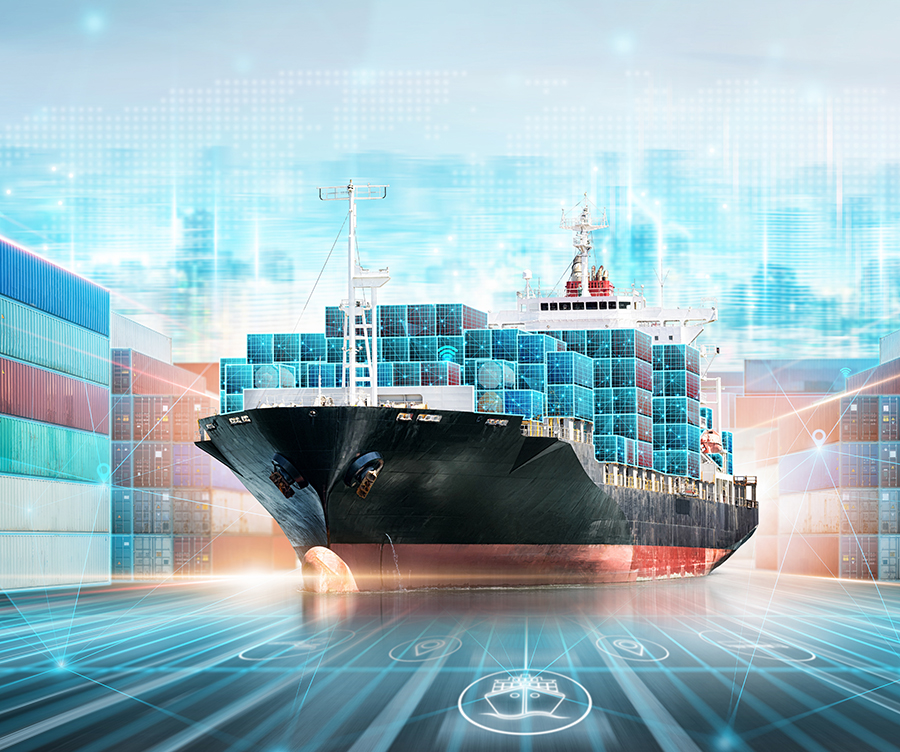After a landmark year for the adoption of electronic bills of lading (eBLs) in containerised trade, digitisation advocates are pushing for usage to double again to 10% by the end of the year.
The Digital Container Shipping Association (DCSA) revealed last month that the number of bills of lading issued electronically for container shipments had reached nearly 5% – more than twice the figure for 2023 and up from just 1.2% two years earlier.
The association, whose members account for around three-quarters of all global containerised trade, described the findings as a “pivotal moment” for the industry. Research suggests moving away from paper could cut direct trade costs by US$6.5bn and trigger a further US$40bn in trade growth.
DCSA chief executive Thomas Bagge says the association now hopes that 10% of eBLs will be issued digitally by the end of this year, in line with its target for 100% adoption by 2030.
Demand for digitisation is already widespread, Bagge tells GTR, citing a DCSA survey of 400 senior representatives of multinational businesses involved in containerised trade.
“As you dig into the numbers, it’s 80-something percent that believe if they are digital, they will make better decisions and improve processes,” he says.
“That is key to international supply chains. If you can’t make good decisions, you can have too much in storage, too much waste in the system, and additional resources that need to be put in.”
But despite recent signs of progress, full usage remains a distant prospect. Bagge acknowledges the association had hoped to have reached 5% adoption by the end of last year.
One long-standing issue is that there are several competing eBL systems in operation, and though a growing number of industry participants have adopted DCSA digital standards, there is still insufficient compatibility across separate platforms.
“If you are a customs authority and you’re receiving electronic documents, you’re not going to go to 10 different platforms,” Bagge says. “You’re either going to integrate them into your systems, or come into some sort of common user interface, and for that, you need to have data interoperability.”
Large corporates have previously told the association they would not consider adopting eBLs unless barriers to interoperability were overcome, yet doing so gives rise to fresh challenges.
For instance, because bills of lading give the holder title to the underlying cargo, there are questions over liability when an eBL leaves one system and enters another.
“You need very strict legal boundaries around that,” Bagge says. “If you have an electronic document now, and it’s moved from one platform to another, what is the exact handover point in time?
“That’s one of the interesting things we’re trying to deal with now. It’s going well, but without that, you cannot have significant adoption towards that 10%.”
Bagge urges different providers to collaborate on these issues, giving the example of the payment card market, where major card schemes and other providers have collaborated to ensure transactions can be routed over different networks depending on which card the end user holds.
“That [collaboration] will make the market grow bigger, because everybody will want to do electronic documents,” he says. “They will then compete on features – and whether that’s around prices, customer service or how many document types they service, interoperability is key.”
The DCSA has also highlighted regulatory barriers holding back wider eBL usage. A paper published by the association in May highlighted numerous such challenges across 15 jurisdictions accounting for around 60% of global trade.
Though Singapore, Taipei, China and Japan scored highest among those jurisdictions, other markets – including Belgium, Hong Kong and the UK, remain in a state of “semi-digitalisation”, where parties can be required to present a digital copy of a paper document or where officials can request an original paper copy.
Canada and the US were the two worst scoring jurisdictions due to “legacy issues” requiring the use of paper.
Bagge says the association is now seeing “a lot more movement” in this area.
The UNCITRAL Model Law on Electronic Transferable Records (MLETR), which has been used as the basis for legal reforms in the UK, Singapore, France and several other jurisdictions, continues to prove a useful tool.
Last month, the Australian government launched consultations on MLETR-aligned reforms, while in July, a World Trade Organization agreement that would commit 91 countries to pass trade digitisation laws took a step closer to formalisation – though resistance remains from some members.
“It’s such an important step that the UK was the first G7 country to implement legislation, and we’ve seen it in Singapore, in Japan, and we see India and a number of Middle Eastern countries working on it,” Bagge says.
Ultimately, however, legal reforms are only one piece of the puzzle.
To reach full adoption by the end of the decade, the industry needs to address concerns over data sharing, hesitance to transition from old processes, leadership issues and job security. Bagge emphasises that industry-wide outreach is crucial in those efforts.
“Sending a rocket to the International Space Station, picking up two stranded astronauts and landing again? That is complicated. What we’re doing is not complicated,” he says.
“It’s just really hard, because there are so many actors in the international community, whether that’s customs authorities, shipping lines, freight forwarders, technology services providers and so on.
“It’s hard to get everybody on the same agenda, and what we are trying to do is inspire people as to what can be achieved if we all go digital.”








